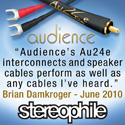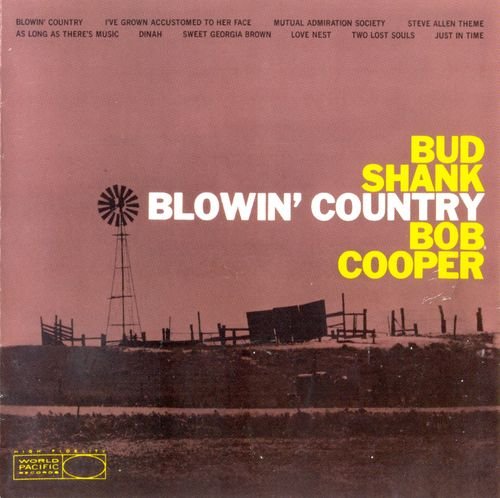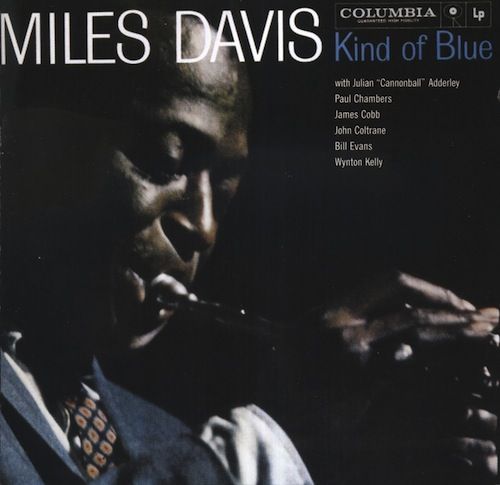|
|
You are reading the older HTML site
Positive Feedback ISSUE 62
bsg technology QOL Signal Completion Stage - A Subtle, Brilliant, Audio Provocateur as reviewed by Jim Merod
Awhile back I offered first impressions as well as a more nuanced and reinforced view of the QOL "Signal Completion Stage" and its stunning way that gives new audio life to recordings that a fellow thinks he knows as well as the proverbial "back of the hand." The desultory fact of one's self-certainty about such things is the discovery, via the QOL's sonic magic, that one frequently does not hear everything available on old favorites... a revolting awakening if there ever was one. A guy is truly sure of very few things in life. The scientist in him is an inveterate skeptic. The poet he carries inside is positive only about the radical uncertainty of everything. The longer we live the more we confront our own implacable ignorance. And yet we deserve a little slack in this chain of downers. How can unexpected additions, previously unrecognized enhancements and outright sonic "completion" just show up in your immediate sonic universe, as if magic vibes are hidden yet waiting for each music lover among us? Explain that to me, Poncho! That seems to be the case with BSG's stealthy QOL unit, but it's likely that such vivid, genuinely beautiful and compellingly subtle audio enhancement is not additive, at all. It just may be that the old nostrum, less is more, is here at work as the inverse of Murphy's Law. How come?, you ask. Who dat huckin' me, I say right back. What are these voices, skeptical and pugnacious all at once, huh? I don't have The Answer, but I have a glimmering intuition that most (not all) recordings carry phase anomalies. In sum, if you play your long held dear-to-your-heart theme song often enough, its shortcomings become charming warts or, better (maybe worse), unnoticed degradations. Believe it or not, there is a very famous, wildly successful (much acclaimed) saxophonist who apparently does not realize how much his sound has degenerated over the years. Either he does not HEAR the stridency of his horn's dissonance or he's become so familiar with it that any attempt to reclaim his earlier sonic glory is irrelevant, useless or unimaginable. Something like slow indoctrination into the joyless white-wash of less than accurate—genuinely anemic—sound reproduction does, in fact, occur on fairly regular terms in a large number of audio systems. Have you noticed the growing pandemic of tweaks to "fix" what's not quite right sonically? That's either outright clueless optimism combined with desperate need. Or sheer experimentation for the sake of making sound better that does not seem "all there." Doubtless, most audiophiles can profit in their enjoyment of music by periodic vacations away from their equipment. Time away might be a boon, no less, for their sonic acuity. Have you ever caromed through the halls of The Venetian in Las Vegas on that forgettable annual January foray when CES is unfurled in all its commercial glory down at the Convention Center while you're in a far more beautiful musical environment, the Venetian's yearly audiophile pow-wow where expense is no object and only audio gear at ungodly high prices commands gape-mouthed witnesses to imagine they're hearing music reproduced with pristine bravura akin to the glittering chrome chases and Ferrari-sculpted visual appeal of the gear that's giving it to them?
Giving it is the operative term there, as in "taking it in the ear," since very (very) few rooms in The Venetian seem capable of giving up good sound, much less doing so under the duress of commercial audio business chattering away as usual. Serious listening there is about as remote as the newly discovered moon circling Pluto (no longer a "planet," only a delegitimized planetoid). It's almost a truism, sadly, that a large segment of the music loving gear-investing public purchases audio equipment with eyes agog and ears clogged. My polemical lament bemoans the failure of High End Audio to "educate" its populace. But why, you retort (right on time), would they want to make discriminating listeners out of bucks-wielding donkeys? People who know what to listen for, who recognize the variables and outcomes of what they're hearing, are not the malleable folks you can easily horn-swaggle. Therefore, what's the value in creating a Sophisticated Listener? Or an educated voter, for that matter. Mark Twain got it right long ago and wrote about it all with sarcastic good faith. So, yup, I say in response to your impertinence: you're right, Barfo Breath. Ain't no viable commercial benefit to un-confusing the befuddled, 'cuz they might realize what's up. What's truly down is the audio (il)literacy of our contemporary culture. The point of such a somber digression is to underline the fact that (a) multi-track recordings have a way of losing phase coherence; and (b) not so good (tho' often overpriced) audio playback gear has a tendency to veil or obscure the full sonic truth of any recording, good or poor or indifferent. A piece of equipment like the QOL works upstream against both the blur of phase incoherence (however slight and sometimes virtually undetected) and the variations of "audiophile" vivacity (read: temperamental variations on reproductive "presence"). How do dat work?, you mumble.
If, at any point in the audio playback chain, anomalous phase differentiation or phase incoherence is lessened, the resulting audio outcome takes on any or all of several audio virtues: expanded staging; increased timbral accuracy; clearer instrument separation; greater timing synchronization among sonic elements; and added spectral clarity top to bottom. I'm not going to assert that I've solved the puzzle of the QOL's sonic wizardry, but my inclination in the face of the cheeky questions and challenges noted above leans toward speculations written under the influence of the QOLs dynamic musical textures as I listen to a mid-'50s Nat Pierce Nonet album on vinyl soon after being "wowed" by a previously unplayed 180 gram Japanese pressing of Miles Davis Sextet's Kind of Blue as I get ready to hit "send" so I can call it a day by plopping a long out of print 1959 Bob Cooper-Bud Shank World Pacific vinyl on my Linn LP-12... Blowin' Country (WP-1277) with Claude Williamson on piano (trumpet guru-Stu's brother) and Chuck Flores on drums.
Whatever exactly this BSG Technology device is "doing" to complete signals here, in the glory of late July on the west coast, I'm not in the least sure I wholly care. I'm curious about it, I admit. But you'll recall Michelangelo's response to the visitor who inadvertently entered the Sistine Chapel soon after the great man crawled down from a hard day's work on high scaffolds. The innocent interloper, unaware he was questioning The Master, asked why he wanted to paint so high up while reclining on his back. The story goes that the maestro's fetid look shriveled the poor fellow's privates. Of course, no one can forget the example of the woman who, told to go on her way happily into the future but not to look back, refused to take heed. Some mysteries carry the force of command. Therefore, why do I have to put up with the flotsam of reactive skeptics and their dorky questions? I'll never understand. We all know that questions are accusations. So, let me close, temporarily once again, since this explaining stuff and being inclined toward ideas and inspiration, maybe a speculation now and then, is real work cuz ill-considered questions make a guy want to crawl into an ice house on a hot day with a keg of Harp's lager or Boddington's ale along with V. S. Ramachandran's most recent book to ease the tug of imbecilic sophmorisms that music (at the outset) was supposed to dissolve... or confound ahead of time. Jim Merod
QOL
BSG Technology
|











